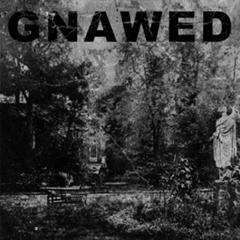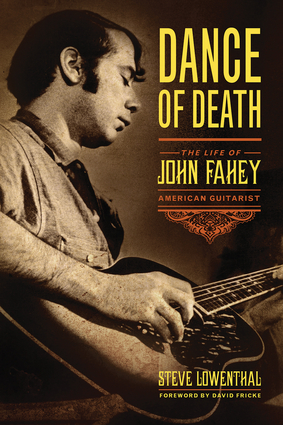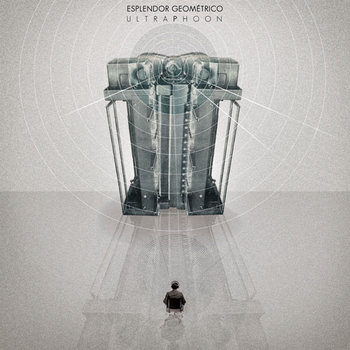- Administrator
- Albums and Singles
 Minnesota's Grant Richardson may be a relatively new player in the American harsh electronics scene, but his expanding discography of tapes and low-run releases have honed his ability and skill at making ugly noise. With Gnawed taking cues equally from the European Cold Meat Industries sound and the contemporary US noise scene, Feign and Cloak is a heavy, yet diverse record that certainly brings power and force, but a lot more as well.
Minnesota's Grant Richardson may be a relatively new player in the American harsh electronics scene, but his expanding discography of tapes and low-run releases have honed his ability and skill at making ugly noise. With Gnawed taking cues equally from the European Cold Meat Industries sound and the contemporary US noise scene, Feign and Cloak is a heavy, yet diverse record that certainly brings power and force, but a lot more as well.
Most of the eight pieces are enshrouded in a constant metallic clang or a dungeon-like reverb, giving some consistently from song to song without ever becoming stagnant.Vocals appear on most of the songs, but not only extremely low in the mix, but heavily buried in a dense flanging, not unlike Con-Dom or The Grey Wolves.The effect is so heavy that the words are all but unintelligible, and given the titling and artwork, I am going to guess they are not about anything pleasant.
Like a good power electronics record, Richardson keeps some semblance of rhythm present throughout many of these pieces.On "Burning the Hive", what sounds like a loosely strung bass guitar sets the rhythmic bed on which a droning, harsh synth expanse is placed.Similarly, on "Feign and Cloak" he uses what sounds to be reverb heavy, filthy synth stabs to give some structure to the piece, while noise grows and cranks up the intensity.
Most overtly song-like is "Pestilence Beholden," beginning with a stammering, distorted drum machine and sustained buzzing synth.The employing of actual, discernible rhythms adds a lot, and as a whole Richardson uses layering to excellent effect.The result is a structured, developing song that sounds like far more than just a blast of white noise.
The final few pieces on Feign and Cloak have Richardson stepping a bit into cleaner, purer sounds beyond just the harsh walls of heavy sound."The Wings and the Carrion" is an echoing expanse, more singed, scorched earth ambience than straight electronics. "The Drowning Fire" begins initially as a bass heavy synth rumble, but soon evolves into scraping noise and distorted voice, transitioning from oppressive ambience into pure oppression, building brilliantly every step of the way.
Richardson's strongest asset on Feign and Cloak is restraint.Even with the massive walls of noise and harsh vocals that appear throughout, he always seems to be holding back, keeping the sound tenser and heavy than it would be if he just unleashed into pure explosive noise.It is that tension and ambiguity that makes the album such a captivating one.
samples:
 
Read More
- Administrator
- Albums and Singles
M. Geddes Gengras returns with the anticipated follow-up to his critically acclaimed Collected Works Vol. 1 The Moog Years (Umor Rex 2013). The music on New Process Music constitutes his first recordings of purely modular composition; while the album was recorded between 2011 and 2012 it has never been released before and we are pleased to present it for the first time as the Vol. 2 of his Collected Works series.
New Process Music represents a major aesthetic shift for M. Geddes Gengras, fusing the long-form modular compositions he had been exploring on a bevy of small-run cassette releases with a new obsession with post-production editing to create a deeply tuned aural environment, lush in analog electronics that are gritty along the edges, with rich textures and melodies materializing and wafting away like smoke. For New Process Music, Gengras used only a small eurorack synth and magnavox tape echo for the tracking process; the pieces that emerge act as documents of an artist exploring the limits of his chosen instruments. Most of the patches here were originally written for performance and recorded live. Sequences are twisted and bent, turned in on themselves or combined with random information. Longer tracks like "Slider" and "The Last Time We Were Here" zigzag across scales, the latter emulating the endless keyboard technique that was highlighted on Collected Works Vol. 1: The Moog Years, while the former takes the form of a bubbling kosmiche workout that collapses under its own momentum. Shorter pieces like "Glass Dance" and "Relation" offer fractured sequences that refuse to resolve over wavering beds of drone and shade. The overall effect is that of a richly detailed sound world that envelops the listener in a deeply personal space.
Out November 18th.
More information here.

Read More
- Administrator
- Albums and Singles
After the Rain is the latest offering from Mark Van Hoen and Louis Sherman's Locust project. Following up the 2013 release You'll Be Safe Forever, this new album sees Locust stepping away from the abstracted forms of previous works presenting a more melodic/harmonic proposition. Bathed in a warm nostalgic memory, After the Rain draws on Mark's formative influences, primarily '70s electronic music.
Unlike previous Locust and Mark Van Hoen releases, which relied on programming and sequencing much of this new record was played live, creating a space where innovation is secondary to the suggestive power of time, space, mood and melody. Rich in melancholia and a yearning for a world once suggested After the Rain explores a crack in the historical framework, one embracing female identity and astute observations of melodic atmosphere. After the Rain is a melodic electronic mood record which presents itself as a triumph of historical revisionism.
More information can be found here.

Read More
- Administrator
- Albums and Singles
After releasing a first glimpse in the form of the Atomos VII EP earlier this year, A Winged Victory For The Sullen reveal their second full-length album entitled Atomos which sees the duo introduce flurries of electronics, harp and modular synthesizers to their sound in the follow-up to the 2011 self- titled album.
In 2013 AWVFTS caught the ear of Wayne McGregor, founder of Random Dance Company and resident choreographer at the Royal Ballet, who is perhaps best known for his choreography work on the Radiohead video "Lotus Flower" as well as "Ingenue" by Atoms For Peace. McGregor used the debut album as the warm-up music during practice sessions for Random, and after noticing the group's reaction with the music, he contacted Adam and Dustin to see if they would write the score for his new work.
Given complete artistic freedom, the duo treated the score with the same care and attention as their debut full-length by recording more than sixty minutes of music over a four-month period across studios in Brussels, Berlin and Reykjavik with the help of their long time collaborative sound engineer Francesco Donadello. During the process they came to the realization that this would become their official second studio album. McGregor provided them with the inspiration to expand their sound palette into more electronic territory, whilst keeping their signature chamber sound, resulting in a very unique release.
More information is available here.

Read More
- Administrator
- Albums and Singles
 Working with the themes of memory and forgetting, as well as the role of attention in listening, Cluett's latest work is highly conceptual.  Forms of Forgetting is a lengthy droning work where Cluett toys with these themes from a sonic perspective, sometimes hypnotic and sometimes drifting off into silence.  Passages are quiet and hushed enough to be ignored, just to come back with an undeniable force and intensity that cannot be forgotten.
Working with the themes of memory and forgetting, as well as the role of attention in listening, Cluett's latest work is highly conceptual.  Forms of Forgetting is a lengthy droning work where Cluett toys with these themes from a sonic perspective, sometimes hypnotic and sometimes drifting off into silence.  Passages are quiet and hushed enough to be ignored, just to come back with an undeniable force and intensity that cannot be forgotten.
Consisting of a single, nearly 56-minute piece, Forms of Forgetting is constructed from two years of live experimentation, art installations, and mobile compositions that blend together into a calming, yet simultaneously heavy work.  The beginning is not forceful, but stays sustained in tone with only the most minor changes, scaling back after about the first 10 minutes.  From there it builds to a subsonic vibration and higher pitched warbling, almost like a bell ringing, and the tones reach a leaden density.
At this point, Cluett's composition becomes a monolith, consuming and absorbing all sound around it.  The sheer sustained tone does a superb job of erasing memory of the subtleties that preceded it.  The dense tones have a layered, metallic quality to them that just adds to their intensity, like an entire universe of vibrating bells.  As the music seems to reach its critical mass of force, Cluett dials things back somewhat.
From here the piece becomes more bleak and introspective.  Like depressing memories from the past, the tones drone less, and the space around them becomes more open and hollow.  Cleaner tones and heavier low end moments characterize the final portion, building to a vaguely abrasive crescendo before retreating to a more stereotypical early electronic music modular type sound.  The ending moments conclude the work with a long, quiet fade out.
As surely his intent, moments of Forms of Forgetting are heavy, forceful, and anything but easily ignored or forgotten.  Other segments, however, Cluett delves more into a hypnotizing, understated world of sound that trails off into the background, at times being easily drowned out by any ambient sound that might be around.  The whole piece works best due to the sum of these parts, the mundane and the gripping, much like memory and experience in the real world, powerfully succeeding with the concept Cluett intended.
samples:
 
Read More
- Administrator
- Albums and Singles
 Lovingly curated and compiled by Zbigniew Karkowski’s frequent collaborator and friend Francisco Lopez, No Bullshit is an appropriately titled and presented tribute.  A data DVD containing over five hours of uncompressed audio from 67 well known (and not so well known) artists working with Karkowski’s source material, huge names from both the worlds of harsh noise and the avant garde (genres his work straddled well) appear to pay their tributes.
Lovingly curated and compiled by Zbigniew Karkowski’s frequent collaborator and friend Francisco Lopez, No Bullshit is an appropriately titled and presented tribute.  A data DVD containing over five hours of uncompressed audio from 67 well known (and not so well known) artists working with Karkowski’s source material, huge names from both the worlds of harsh noise and the avant garde (genres his work straddled well) appear to pay their tributes.
Representing the less academic noise side of the spectrum, Daniel Menche’s own penchant for extreme low frequencies work appropriately on "He was One and Many," but expanding the repertoire to include rough bowed strings and lots of variation in sound and mood, fitting in with his more recent, complex work.  GX Jupitter-Larsen's "Zbigniew Tribute" sounds consistent with his work as the Haters: a dull machinery roar echoes about a hollow space wonderfully.
Lopez was also able to coax some material out of the less prolific names in this genre, reinforcing the importance of Karkowski's enduring legacy and influence on dissonant music.  Eric Lanzillotta's "Recompression" is built mostly from deep, subsonic sine waves that change in pace, but stick to the rumbly side of the spectrum until the latter moments.  Scott Arford's "Untitled (ElectroStatics)" keeps mostly to mid-register sounds, but static heavy and lots of variation in texture and sound to make it a standout.  Damion Romero's "170358" focuses on the careful manipulation of feedback that he is known for, evolving from a idling hum into a distorted roar in a beautiful progression.
Representing the more academic world, Phill Niblock supplies "Bells & Timps," an understated composition of bell tones that results in one of the more quiet, and definitely melodic, compositions here (even though the song's duration is far shorter than his usual works).CM von Hausswolf’s "Still Through the Door" is a swarming, dense wall of digital insects that might not vary a significant amount, but works as a pensive, meditative accompaniment.  Francisco Lopez himself presents "Untitled #316 (for Zbigniew Karkowski)," a first half of deep rumbling and static fragments, seguing into a crystal storm of digital noise.
Some artists' contributions are collaborations with Karkowski, such as Masami Akita's as MAZK.  "Untitled Mix" stands out with its subsonic drum pulse and spacy, psychedelic synth noise, as something far more techno (and unique) than I expected.  John Duncan's "SHATTER" collaboration is all a mass of digital tinged loops, clattering about brilliantly.  "Zimny Poznan", with Robert Piotrowicz, is perhaps the most forceful and intense:  a wall of modular noise and low-end drone that refuses to relent, while constantly changing and evolving throughout.
Noise orchestra Zeitkratzer's composition, to me, symbolizes the spirit of this collection.  All boisterous noise and dissonance, it presents just the right amount of drama, reverence, and pure heavy sounds to culminate in a respectful, and fully appropriate goodbye.  Presented as the title would indicate, this simple monochromatic digipak is anything but ostentatious, and the lack of pretense and overwrought, grandiose posturing fits perfectly in with Karkowski's life and body of work.  Much like his work, the artists here let the music pay tribute, as I imagine he would have wanted it to be.
samples:
- MAZK - "Untitled Mix"
- Phill Niblock - "Drums & Timps"
- Zeitkratzer - "Zeitkratzer's Farewell to Zbigniew"
 
Read More
- Administrator
- Albums and Singles
John Fahey is to the solo acoustic guitar what Jimi Hendrix was to the electric: the man whom all subsequent musicians had to listen to. Fahey made more than 40 albums between 1959 and his death in 2001, most of them featuring only his solo steel-string guitar. He fused elements of folk, blues, and experimental composition, taking familiar American sounds and recontextualizing them as something entirely new. Yet despite his stature as a groundbreaking visionary, Fahey’s intentions—as a man and as an artist—remain largely unexamined. Journalist Steve Lowenthal has spent years researching Fahe'’s life and music, talking with his producers, his friends, his peers, his wives, his business partners, and many others. He describes Fahey’s battles with stage fright, alcohol, and prescription pills; how he ended up homeless and mentally unbalanced; and how, despite his troubles, he managed to found a record label that won Grammys and remains critically revered. This portrait of a troubled and troubling man in a constant state of creative flux is not only a biography but also the compelling story of a great American outcast.
More information can be found here.

Read More
- Administrator
- Albums and Singles
Recorded in Madrid and Rome during 2013, this is the new album by the influential electronic duo ranked as industrial music pioneers. Ultraphoon is a leap ahead as for production and sound quality, with a stunning and brutal outcome, richly detailed nonetheless. Rhythms, noises and processed voices from different sources come together in hypnotic –bordering on trance– soundscapes along the lines of previous releases such as Pulsión (2009) and Desarrollos Geométricos (2011). Most of the meticulous mastering process has been carried out by Francisco López, internationally renowned as one of the top sound art and experimental music personalities, giving a new twist to the usual Esplendor Geométrico sound.
More information can be found here and here.

Read More
- Administrator
- Albums and Singles
Trouble is the brand new dispatch from the assorted output of Kevin Drumm and sits as one of the quietest in his entire catalogue. A single continuous 54-minute excursion into the netherworld of the audio spectrum, Trouble is neither ambient nor drone but a more complex investigation into the deep recesses of sound. One which discreetly works itself into the mind of a listener willing to invest in the path laid out in this extremely subtle, beautiful and exceptional release.
More information can be found here.

Read More
- Administrator
- Albums and Singles
Recorded with a multitude of collaborators in Europe, Japan, Australia and the USA, Quixotism presents the fruit of two years of work in the form of a single, LP-length piece in five parts. Ambarchi's work in recent years has evinced an increasing fascination with the possibilities of combining abstract sonic textures with rhythm and pulse, whether in his drumming with Keiji Haino, the subtly driving ride cymbals provided by drummer Joe Talia in their work together, or the motorik grooves of Sagittarian Domain (Editions Mego, 2012). Quixotism takes this aspect of Ambarchi's recent work to the next level: the entirety of this long-form work is built on a foundation of pulsing double-time electronic percussion provided by Thomas Brinkmann. Beginning as almost subliminal propulsion behind cavernous orchestral textures and John Tilbury’s delicate piano interjections, the percussive elements (elaborated on by Ambarchi and Matt Chamberlain) slowly inch into the foreground of the piece before suddenly breaking out into a polyrhythmic shuffle around the halfway mark, being joined by master Japanese tabla player U-zhaan for the piece’s final, beautiful, passages.
The pulse acts as thread leading the listener though a heterogeneous variety of acoustic spaces, from the concert hall in which the Icelandic Symphony Orchestra were recorded to the intimacy of Crys Cole's contact-mic textures. Ambarchi’s guitar itself ranges over this wide variety of acoustic spaces, from airless, clipped tones to swirling, reverberated fog. Within the complex web Ambarchi spins over the piece’s steadily pulsing foundation, elements approach and recede, appear and reappear, in a non-linear fashion, even as the piece plots an overall course from the grey, almost Nono-esque reverberated space of its opening section to the crisp foreground presence of Jim O’Rourke's synth and Evyind Kang’s strings in its final moments. Formally indebted to the side-long workouts of classic Cologne techno, the long-form works of composers such as Eliane Radigue, and the organic push and pull of improvised performance, Quixotism is constantly in motion, yet its transitions happen slowly and steadily, so that they are often nearly imperceptible, the diverse elements which make up the piece succeeding one another with the logic of a dream.
Anyone who follows Ambarchi's work knows that it has many facets: explorations of the outer limits of rock with Keiji Haino, psychoacoustic interference and sizzling harmonics in his solo performances, delicate improvisations with Keith Rowe or John Tilbury. To all these projects, Ambarchi brings his particular sensibility, patiently allowing sounds to develop on their own terms without forsaking their intrinsic physical and emotional power. Similarly, although Quixotism is shaped by its many contributors, the resulting sound world is unmistakably Ambarchi’s own. His most substantial solo release since Audience of One (Touch, 2012), Quixotism represents the summation of Ambarchi’s work over the last few years while also pointing to the future.
More information can be found here.

Read More
- Administrator
- Albums and Singles
Ashley Paul's Heat Source was recorded during a challenging year of transience between New York and London. During this year of impermanence Paul performed regularly and the effects of frequent performance and traveling can be heard in the intentionally pared back emptiness of Heat Source. making it an emotionally challenging and fascinatingly personal listening experience.
Heat Source finds Ashley Paul working using her brilliant ears to find a zen like balance between her voice and a sparse arrangement of staccato instrumentation leaving as much open space on one song as most people would create in a lifetime. This open space isn't empty, however, but it's up to you to fill in the meaning. Heat Source is an emotionally challenging and fascinatingly personal listening experience that creates a powerful pace.
Ashley Paul is a performer and composer based in Brooklyn, New York. She uses an array of instruments including saxophone, clarinet, voice, guitar, bells and percussion, mixing disparate elements to create a colorful palate of sound that works its way into her intuitive songs; free forming, introverted melodies. This blend manifests beautiful and simple musical forms against acoustic experimentation. Her solo albums have received high praise being chosen in Wire Magazine's "Top 18 Releases of 2013," Pitchfork "Best Experimental sounds of 2013", first on Byron Coley and Thurston Moore's "Tongue Top Ten" in Arthur Magazine and included on NPR's All Songs Considered "Best of 2010". She has been interviewed or featured in Wire Magazine, BOMB, Gonzo (circus), Dummy, The Quietus, Ad Hoc, Spex, The Sound Projector and Foxy Digitalis.
Ashley has performed or recorded with Phill Niblock, Rashad Becker, Nik Colk Void, Loren Connors, Aki Onda, C. Spencer Yeh, Anthony Coleman, Joe Maneri, Joe Morris, Seijiro Murayama, Greg Kelley, Bill Nace and Eli Keszler appearing on such labels as PAN, ESP-DISK' and Tzadik. She received a Masters of Music from New England.
Out October 27th.
More information will eventually be available here.

Read More

